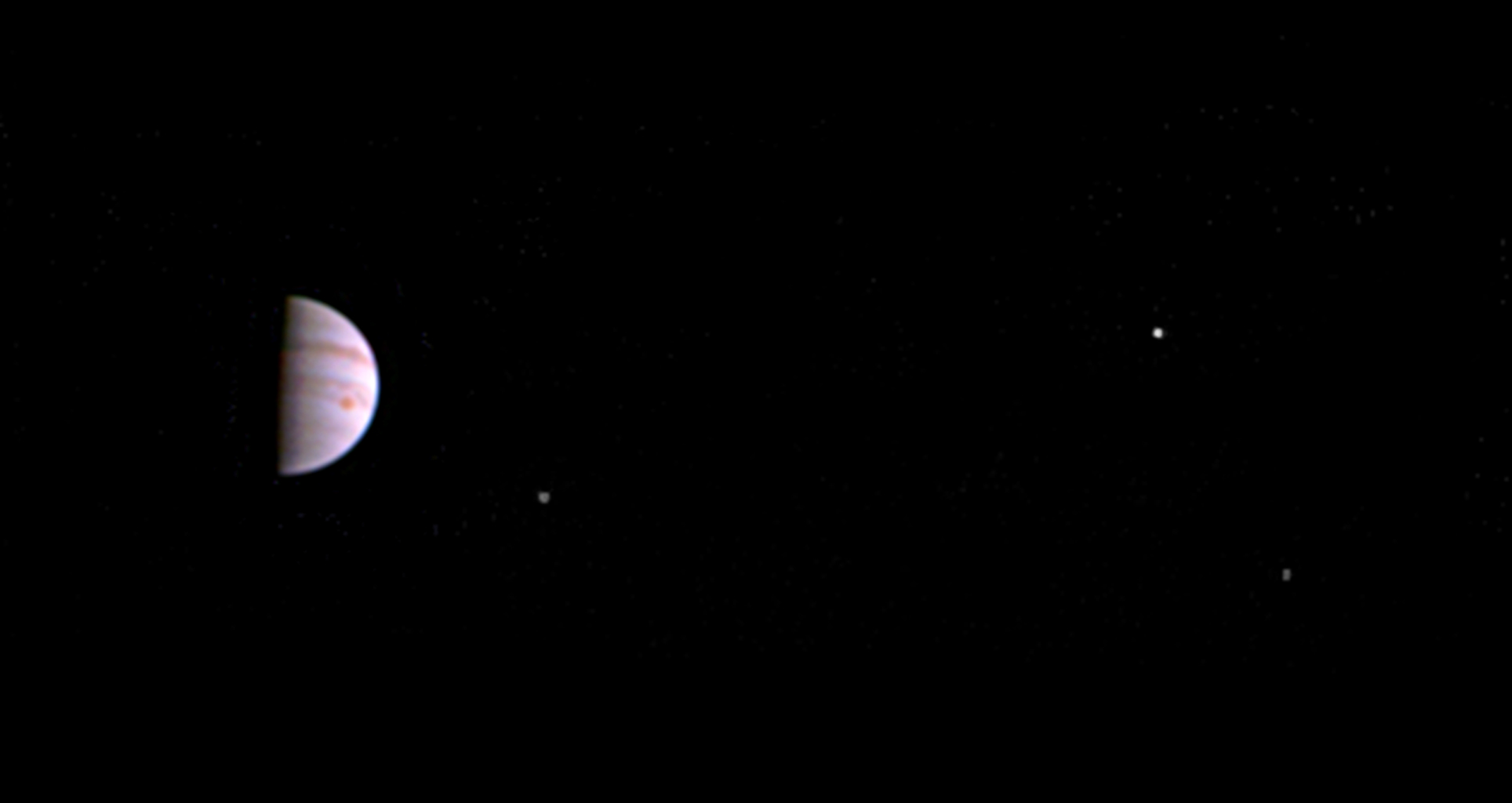This is the first image of Jupiter captured by the Juno spacecraft
On July 4, NASA’s Juno spacecraft finally reached Jupiter. Juno’s visible-light camera was turned on six days after Juno fired its main engine and placed itself into orbit around what is referred to as the largest planetary inhabitant of our solar system.
Though the first high-resolution images of Jupiter are still a few weeks away, here’s the first view obtained when the spacecraft was 2.7 million miles from Jupiter on the outbound leg of its initial 53.5-day capture orbit. The color image shows atmospheric features on Jupiter, including the famous Great Red Spot, and three of the massive planet’s four largest moons: Io, Europa and Ganymede, from left to right in the image.

“This scene from JunoCam indicates it survived its first pass through Jupiter’s extreme radiation environment without any degradation and is ready to take on Jupiter,” said Scott Bolton, principal investigator from the Southwest Research Institute in San Antonio. “We can’t wait to see the first view of Jupiter’s poles.”
According to Candy Hansen, Juno co-investigator from the Planetary Science Institute, the first high-resolution images of the planet will be taken on August 27 when Juno makes its next close pass to Jupiter.
JunoCam is a color, visible-light camera that was designed to capture pictures of Jupiter’s poles and cloud tops. The Juno team is currently working to place all images taken by JunoCam on the mission’s website, where the public can access them.
During its mission of exploration, Juno will circle Jupiter 37 times, soaring low over the planet’s cloud tops, as close as about 2,600 miles. During these flybys, Juno will probe beneath the obscuring cloud cover of Jupiter and study its auroras to learn more about the planet’s origins, structure, atmosphere and magnetosphere.
For more information visit NASA.


Comments are closed, but trackbacks and pingbacks are open.